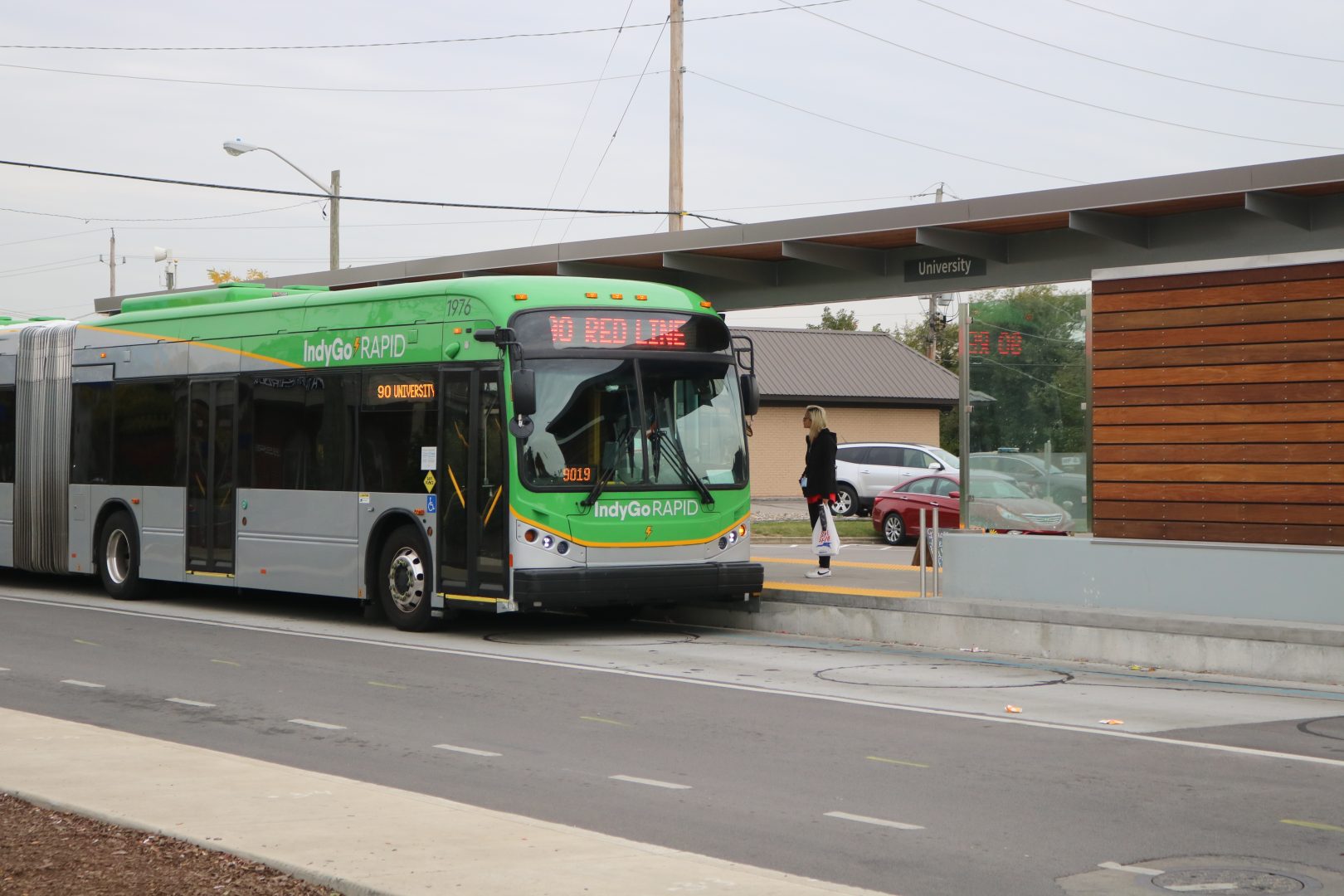IndyGo’s new Red Line station next to the University of Indianapolis’ opened along Shelby Street on Sept. 1, giving students a new way to travel across the city. Since its opening, some new updates have come to the Red Line system, including how riders pay and the free ticket period.
Originally, the Red Line was planned to be free to riders only through the month of September. However, the free period has been extended until Nov. 10, according to an IndyGo press release. One reason for the change was to improve the fare system, according to UIndy Associate Vice President and Special Advisor to the President for External Relations Corey Wilson.
“I think that [it] was a decision largely driven by the need to continue to work out some of those logistics on the payment system that is going to be utilized,” Wilson said. “It benefits everybody for that additional grace period to allow people to test it out while it’s still warm outside and get out and really enjoy a good time throughout the city.”
According to IndyGo Director of Public Relations Lauren Day, the new fare system includes an app called MyKey, which will allow users to load money into the app and pay by scanning a QR code. Riders can also use a physical reloadable card that they can tap at the station or on the bus to pay.
MyKey, according to the IndyGo website, is a system that is an alternative to the month and week passes. Instead of paying on the first of the month or week, users now pay as they ride, with a limit placed on how high the price can go. The program also features fare capping. Using this system, a rider would never have to pay more than $4 in a day or $15.75 in a week, Day said.
“It’s an incredibly equitable way of providing fare for transit because the more you ride, you’re always getting the best value and many of our riders… feel right now the best value is if you spend $60 at the beginning of the month and you get a 31-day pass,” Day said. “But, how many of us, every month on the first of the month, have $60 and make a trip to the transit center and buy it? And so, for folks who ride often, you’re not getting the best value and this fare capping is a really wonderful way to provide the best value to our riders who ride more frequently, but in order to do that you have to have a technology that can essentially count the trips.”

The other reason for the free ticket period extension is due to the Red Line still being a new service for the city, Day said, and as the Red Line continues to improve, riders are also experiencing the changes that come to the service.“We have kinks to work out and the riders are with us along the way as we continue to improve the service,” Day said.
“We know we have things to work out and so we wanted to expand that free period both for the fare reasons, but also to recognize that we’ve had a couple of mishaps along the way and we wanted to make sure that riders knew that we were aware of that and looking out for them and just add a couple more weeks of free rides on.”
On Sept. 7, a few days after the Red Line opened, a drunk driver hit the UIndy station. The station, according to Wilson, is still operating. However, some technological elements and the map case still need some repairs, according to Day.
“Making sure that [the station] was safe for riders is going to be the number one priority and then those [repairs] will come afterwards,” Day said.
Wilson said that he believes the Red Line has been doing well so far. Part of the success he said is due to the Red Line currently being free.
“I think that [the Red Line being free] doesn’t hurt with people that are just curious about it, but then I also think the fact that it’s so convenient, [and] thinking about parking and not having to deal with that,” Wilson said. “Whether you are going to Fountain Square, downtown or even up to Broad Ripple, all of those areas you’re likely going to have to pay something to park and riding the Red Line, you don’t have to worry about that.”
Two new rapid-transit lines, the Blue Line and the Purple Line, are currently undergoing early discussions, Wilson said. He said that these future lines are dependent on the success of the Red Line.
“We’ve [UIndy] been at the table of being a strong supporter of any type of mass transit,” Wilson said. “So we were really excited when we learned that the [Red Line] station would be on campus… and [we] continue to have conversations about—with the IndyGo folks—about how to continue to enhance and maintain our site. So that’s where we’ve been and I really like the position [of] where we are.”






